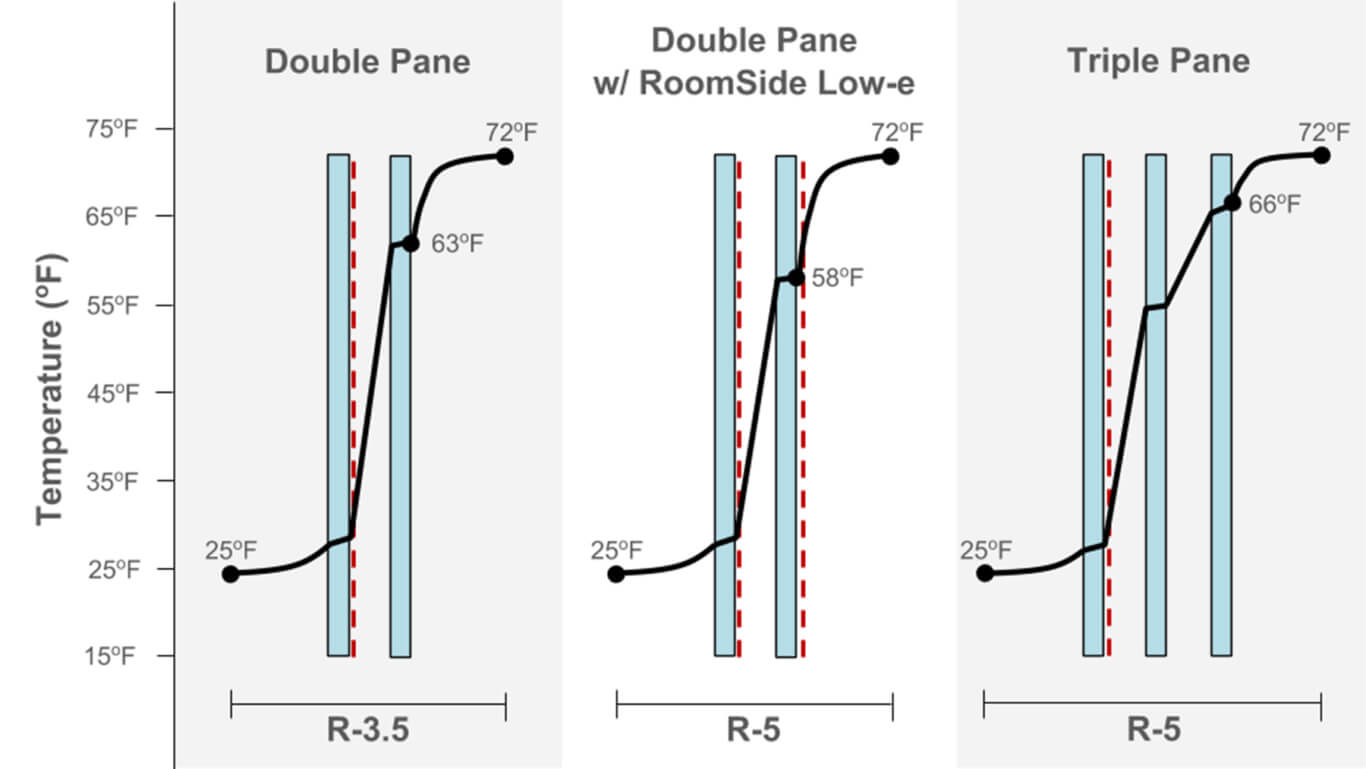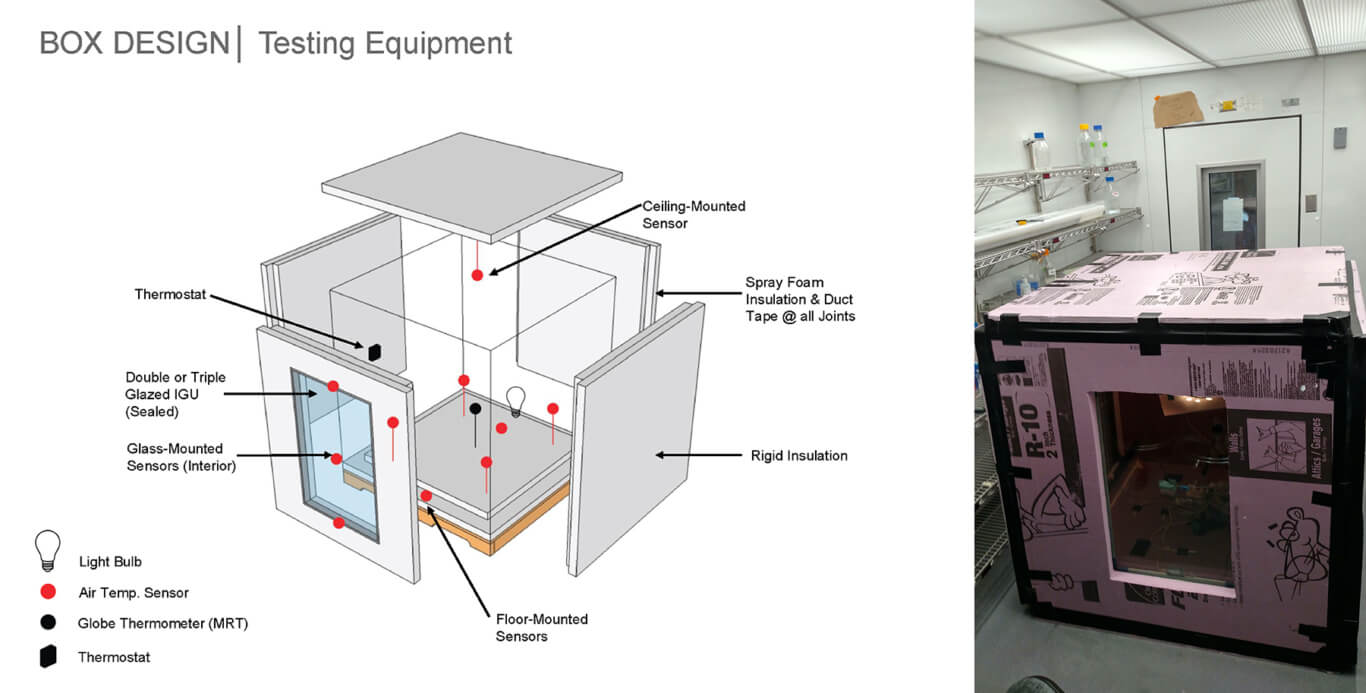In this three-part series, we will showcase the process, results and lessons learned of a Low-E Experiment conducted by our Building Science Group to better understand the impact of low-E coating on insulated glazing units (IGUS).
Those who follow the most recent trends in high performance insulated glass are likely aware of a recent manufacturing innovation that has enabled the application of durable, low-emissivity (low-E) coatings on the interior side of windows. While such coatings have historically only been applied in between panes of glass in order to protect them, this new innovation has opened up a plethora of potential opportunities and research questions with major consequences for architectural practice.
Perhaps most notably, double-pane insulated glazing units (IGUs) with room side coatings have the potential to exhibit comparable thermal performance and U-values to some types of triple pane units but at a fraction of the cost. This means that they could easily become the default basis of design for many projects as practices seek solutions that lower building energy use without raising up-front cost. However, the impact that these new coatings might have on occupant wintertime thermal comfort has been difficult to assess. This is primarily because the physics of how low-e coatings increase IGU insulation means that the interior surface temperature of such IGUs will be much colder than a window assembly without the coating. By contrast, the interior temperature of an IGU with an additional pane of glass and air gap would be warmer as illustrated below in the temperature profiles of three IGUs with cold outdoor temperatures of 25F and warm indoor temperatures of 72F.

To make the matter more complex, the thermal reflectiveness of the room-side low-E coating means that, even though room side low-e coatings make interior surfaces colder, occupants are less likely to experience radiant heat loss from cold window assemblies. This means that full-body cold sensations experienced next to room side low-E windows are likely uncommon. However, cold window surface temperatures still have the potential to produce intensely cold downdrafts off the window, which could cause localized thermal discomfort for occupants at ankle-level.
In order to understand these phenomena and assess their relative intensity, our practice performed a series physical experiments on three IGUs that Vircon donated to us:
- Traditional double-pane with a single low-E between glass panes
- Double pane with two low-e coatings (one of which is room side)
- Traditional triple pane with a single low-e between the outer glass panes
The IGUs were placed on one side of an insulated box with walls of R-20. The entire experimental setup was placed in a cold room kept at 40oF while an incandescent light bulb with a fixed wattage inside the box heated the box interior. On average, the bulb heated the box interior to 86oF, though the exact box temperature was allowed to vary with the overall insulation of the IGU. For each of the IGUs, the setup was left for 48 hours until steady state conditions were reached. The average temperature in the center of the box was used to deduce a relative insulation value for each of the IGUs. A globe thermometer in the center of the box was used to assess the mean radiant temperature that an occupant might experience. Lastly, several temperature sensors were located on the surface of the glass and along the floor of the box behind the IGUs in order to understand the downdraft conditions produced by each unit.

Check out our post next week to see the key findings that were discovered through the experiment and how its better informed our design decisions at our practice.

